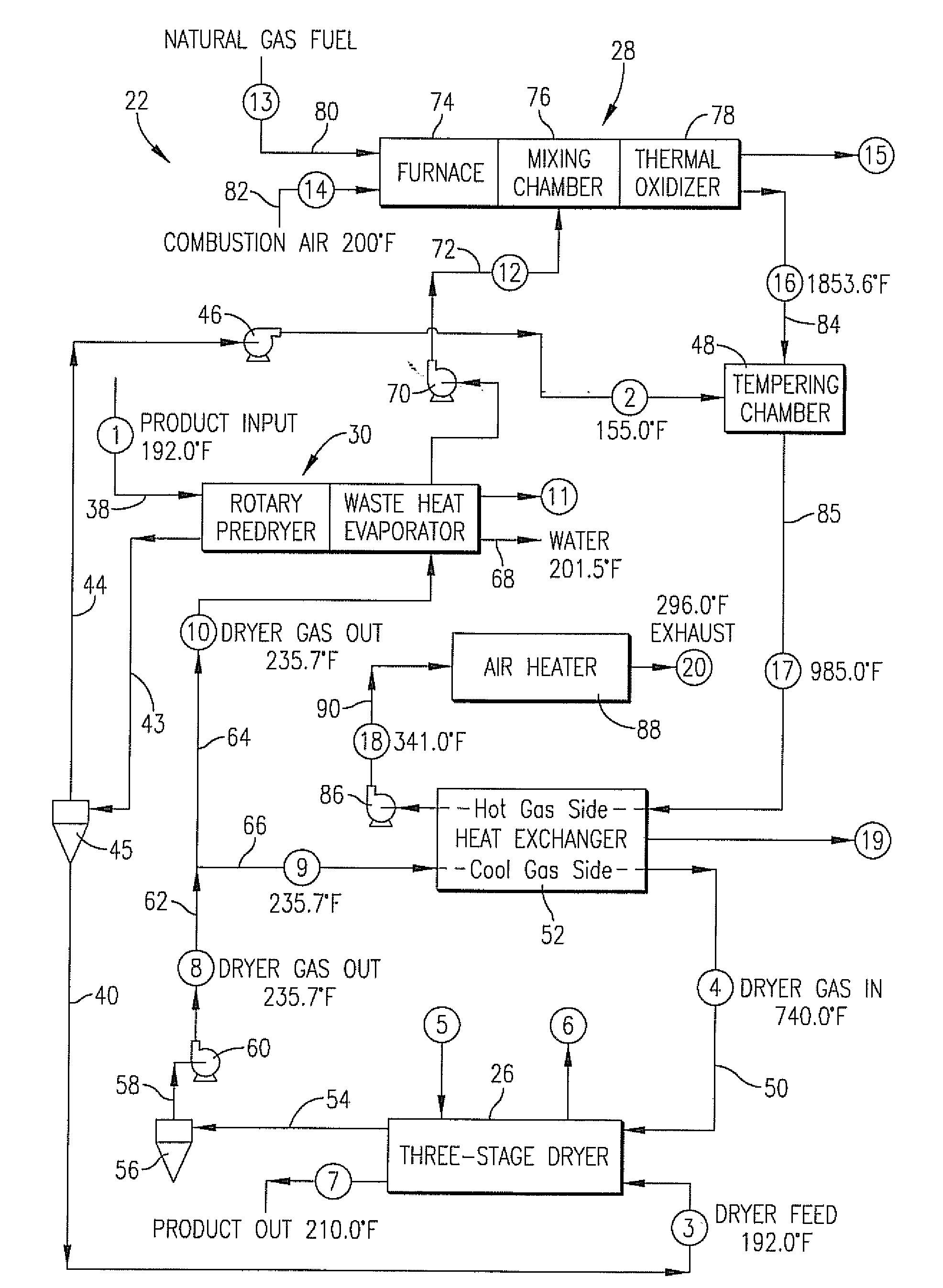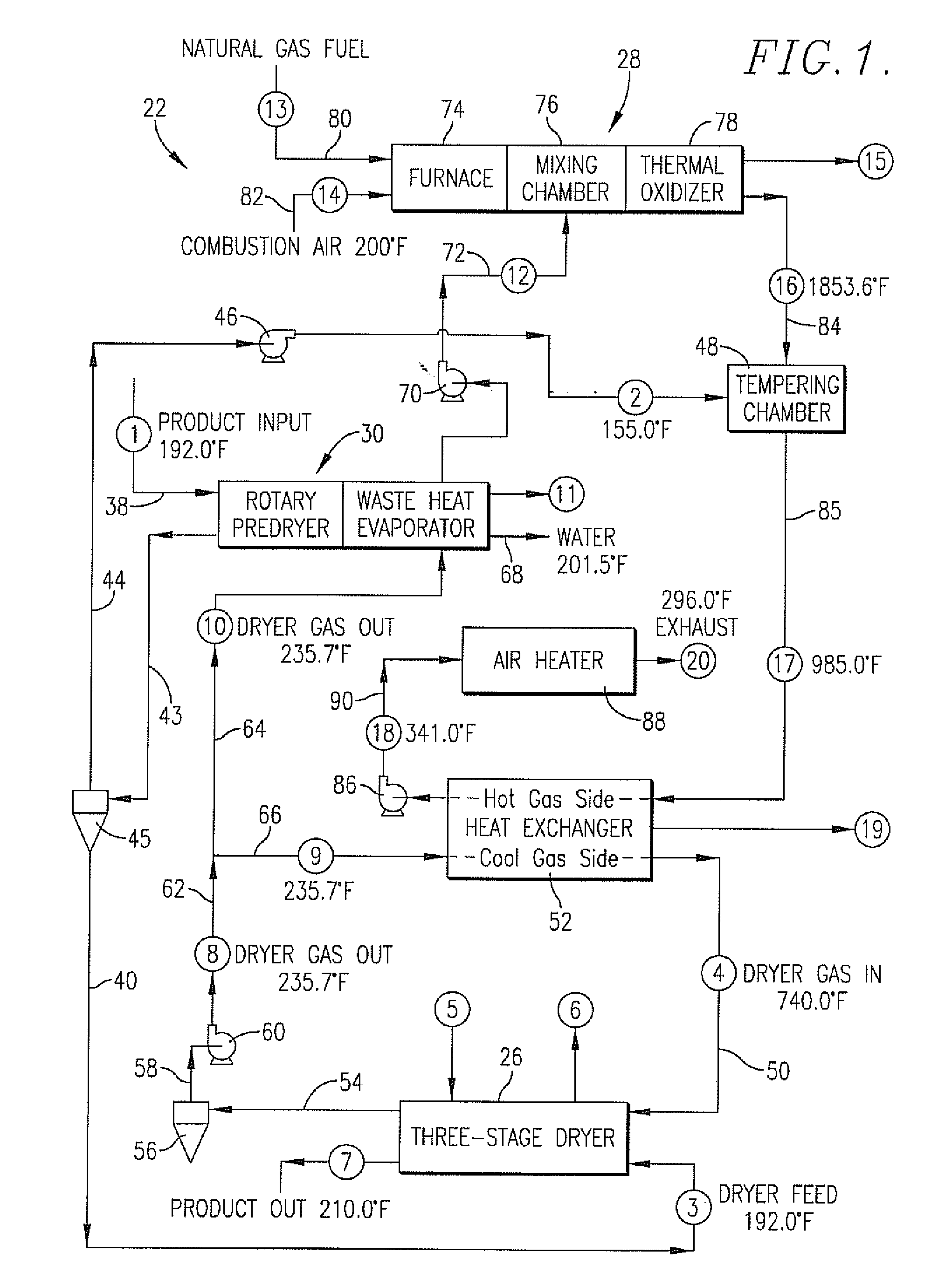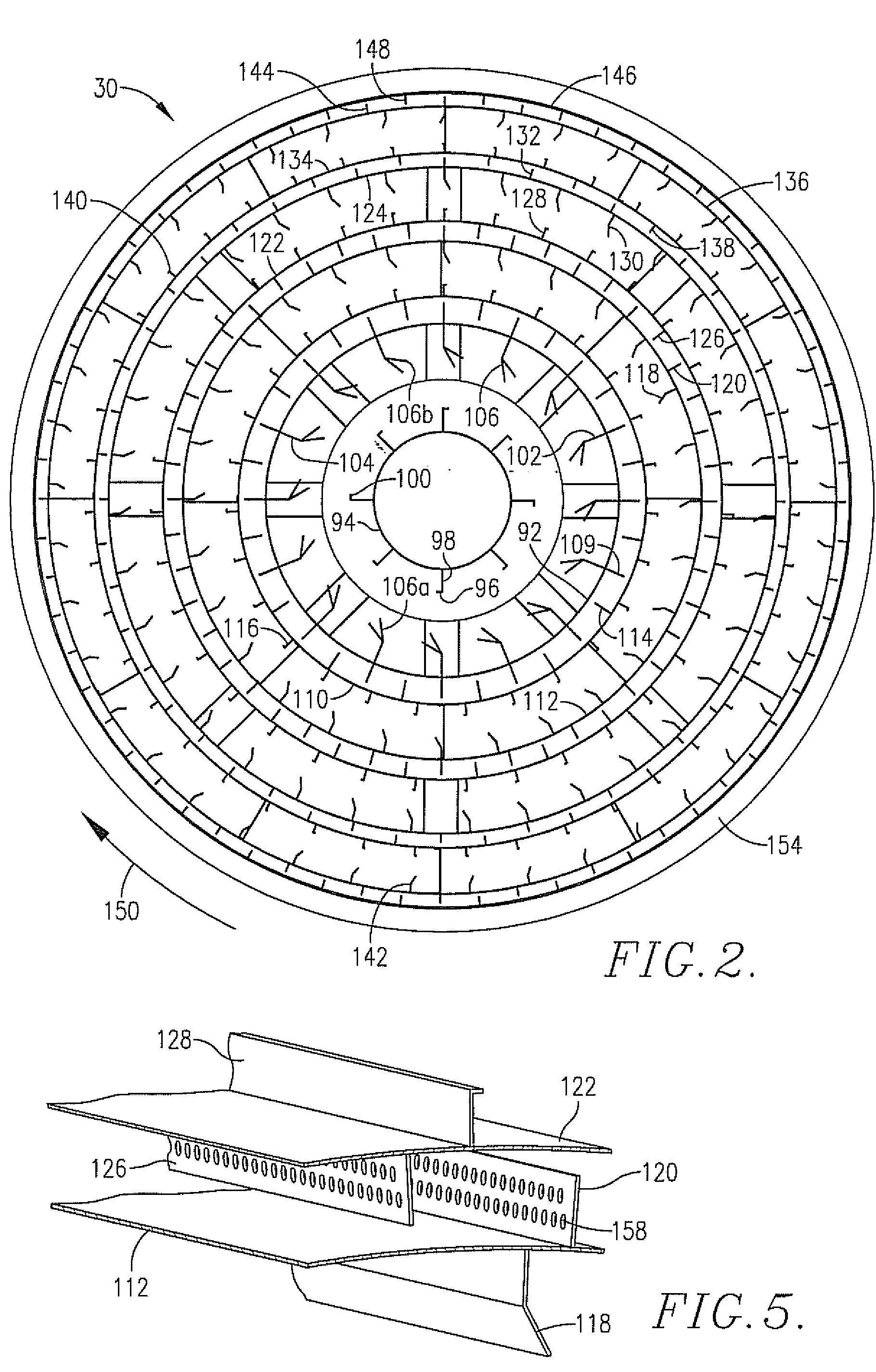Moist organic product drying system having a rotary waste heat evaporator
a technology of organic products and waste heat evaporators, which is applied in drying machines, lighting and heating apparatus, furniture, etc., can solve the problems of inability to adequately control both the temperature of thermal oxidizers and oxygen concentrations, and the reduction of voc and co content to the atmosphere, so as to achieve the effect of reducing voc and co conten
- Summary
- Abstract
- Description
- Claims
- Application Information
AI Technical Summary
Benefits of technology
Problems solved by technology
Method used
Image
Examples
Embodiment Construction
[0028]FIG. 1 illustrates an exemplary process 22 according to the present invention for reducing the VOC and CO content of dryer offgas that is discharged into the atmosphere from a moist organic product drying process. The process employs a predryer / waste heat recovery unit 24 (shown schematically in FIG. 6) in order to remove moisture from the moist product. Unit 24 also removes moisture from the dryer offgas so that higher thermal oxidizer temperatures may be achieved while maintaining a sufficient level of oxygen in the output from the thermal oxidizer. As explained hereunder, unit 24 is integrated with a primary product dryer 26 and thermal oxidizing apparatus 28 in order to achieve thermal oxidation of pollutants present in the dryer offgas prior to discharge to the atmosphere.
[0029]Moist product to be dried is initially fed to a rotary waste heat evaporator 30, also referred to herein as a predryer, by way of a product conveyor 32. Typically, the moist product supplied to pro...
PUM
 Login to View More
Login to View More Abstract
Description
Claims
Application Information
 Login to View More
Login to View More - R&D
- Intellectual Property
- Life Sciences
- Materials
- Tech Scout
- Unparalleled Data Quality
- Higher Quality Content
- 60% Fewer Hallucinations
Browse by: Latest US Patents, China's latest patents, Technical Efficacy Thesaurus, Application Domain, Technology Topic, Popular Technical Reports.
© 2025 PatSnap. All rights reserved.Legal|Privacy policy|Modern Slavery Act Transparency Statement|Sitemap|About US| Contact US: help@patsnap.com



